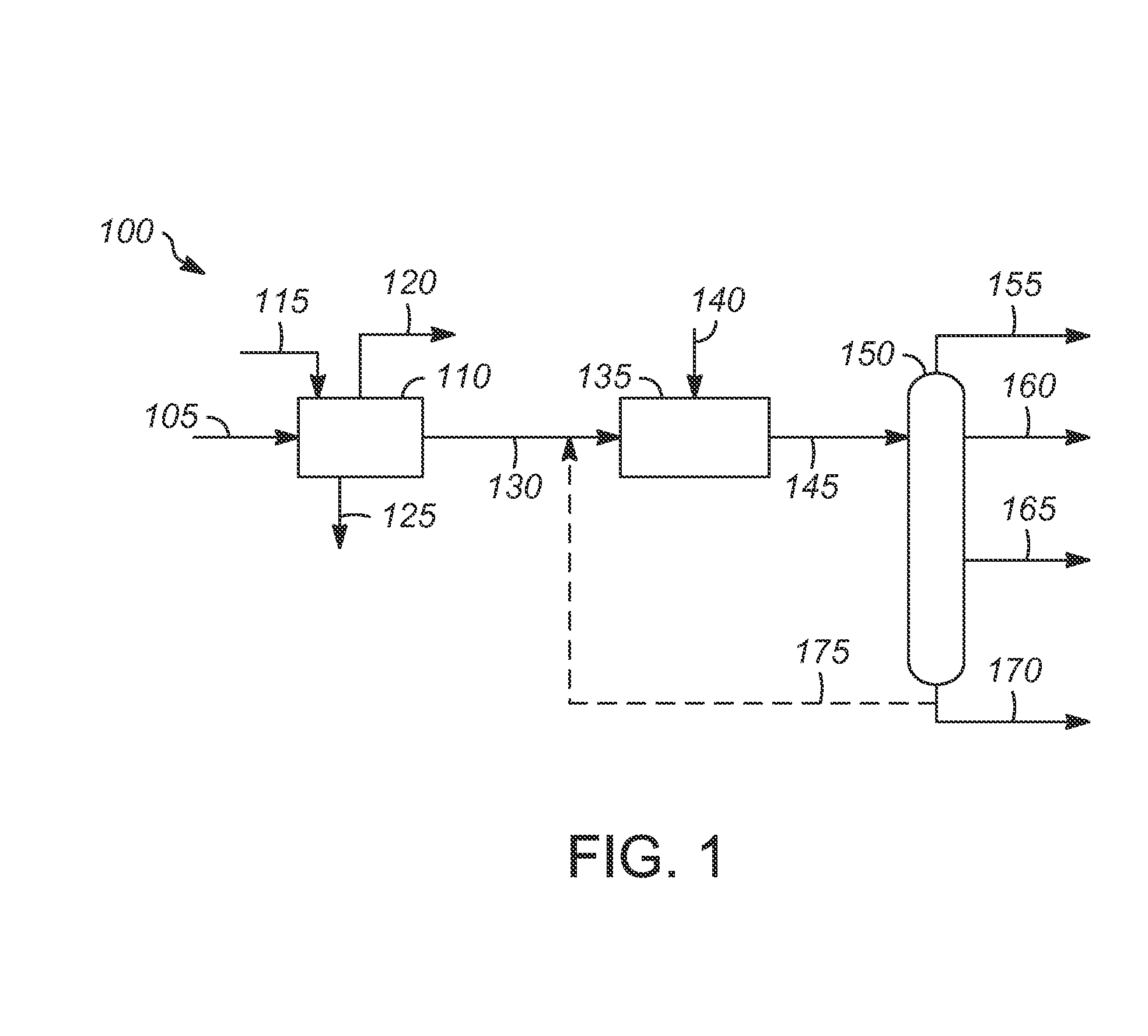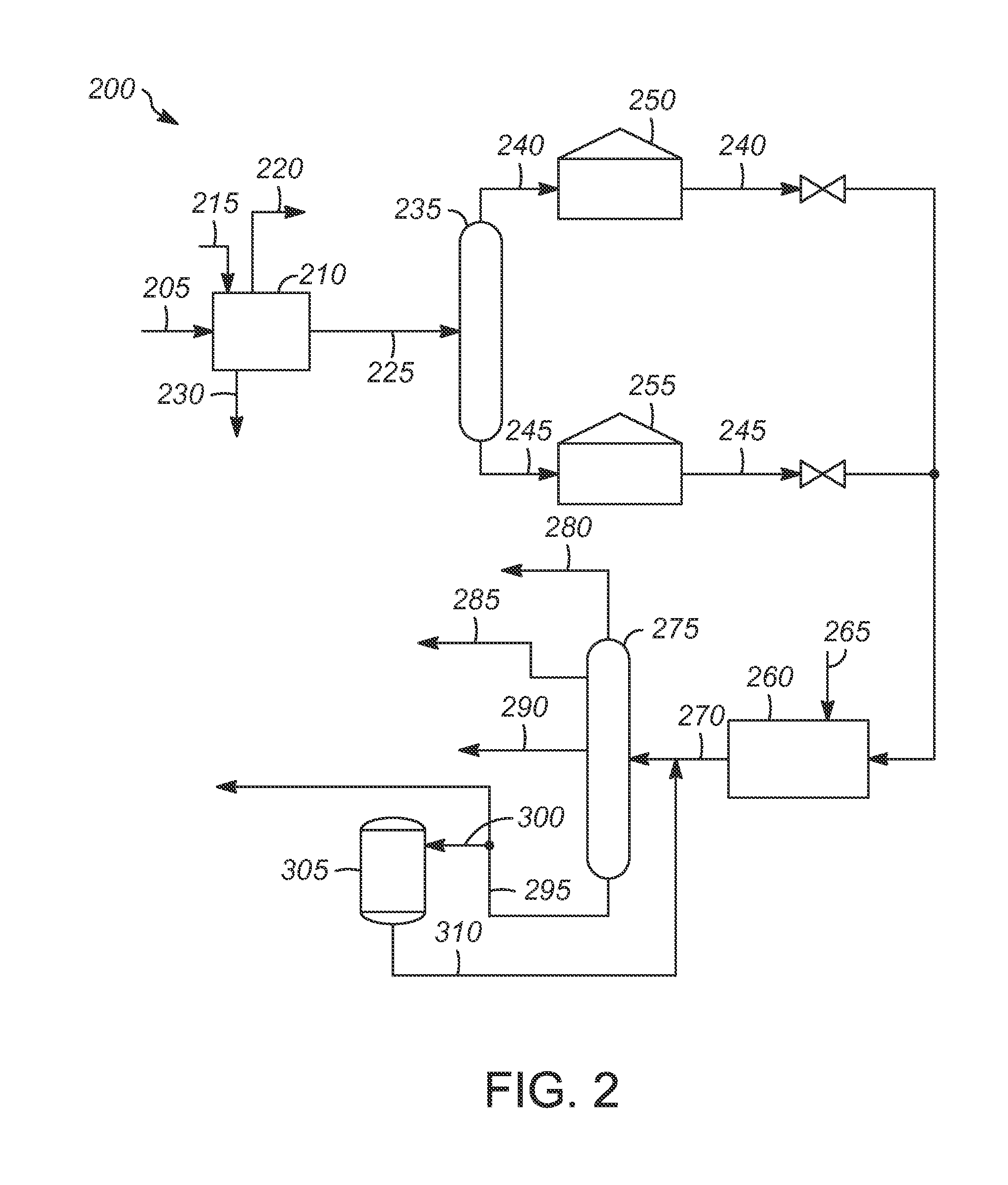Process for producing diesel fuel and aviation fuel from renewable feedstocks having improving yields
a technology of renewable feedstocks and aviation fuel, which is applied in the direction of biofuels, fuels, organic chemistry, etc., can solve the problems of undesirable co-products of naphtha and light ends, undesirable distillate yield,
- Summary
- Abstract
- Description
- Claims
- Application Information
AI Technical Summary
Problems solved by technology
Method used
Image
Examples
Embodiment Construction
[0013]The present process meets the need for producing aviation fuel and diesel from renewable feedstocks at high conversion rates with reduced production of naphtha and light ends.
[0014]This process involves introducing the renewable feedstock into a hydrogenation and deoxygenation zone. The primary hydrocarbon effluent from the hydrogenation and deoxygenation zone is separated into an aviation boiling range fraction and a diesel boiling range fraction. The aviation boiling range fraction and the diesel boiling range fraction are alternately sent to an isomerization and selective hydrocracking zone. This allows for lower severity operating conditions in the isomerization and selective hydrocracking zone when processing oils that naturally contain medium and long carbon chains (C8-C18), such as coconut or palm kernel oil. The lower severity operation results in isomerization with decreased cracking, such that the aviation fuel yield is increased and the light ends and naphtha co-pro...
PUM
 Login to View More
Login to View More Abstract
Description
Claims
Application Information
 Login to View More
Login to View More - R&D
- Intellectual Property
- Life Sciences
- Materials
- Tech Scout
- Unparalleled Data Quality
- Higher Quality Content
- 60% Fewer Hallucinations
Browse by: Latest US Patents, China's latest patents, Technical Efficacy Thesaurus, Application Domain, Technology Topic, Popular Technical Reports.
© 2025 PatSnap. All rights reserved.Legal|Privacy policy|Modern Slavery Act Transparency Statement|Sitemap|About US| Contact US: help@patsnap.com


